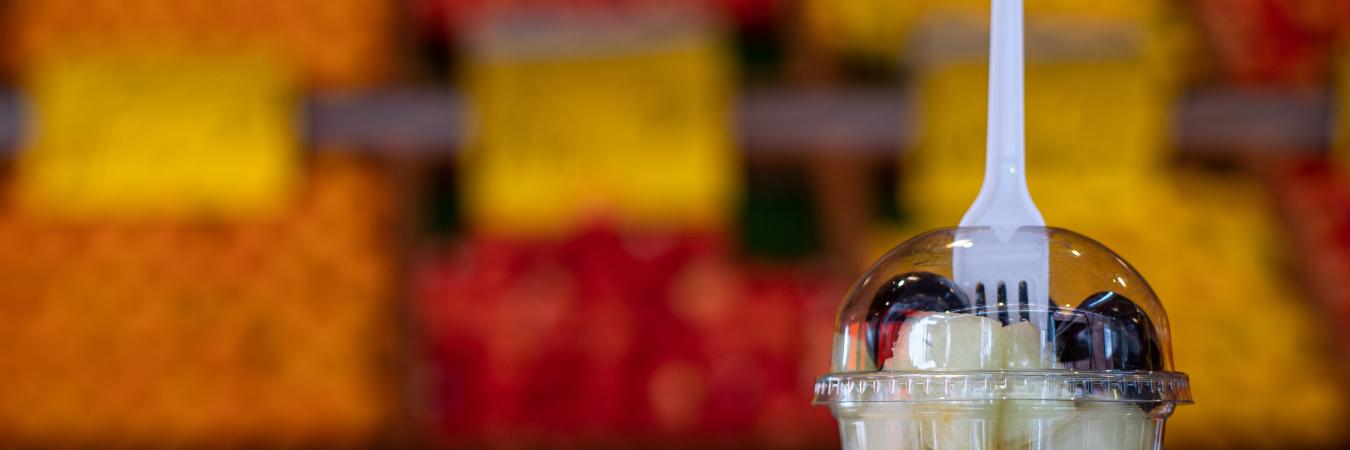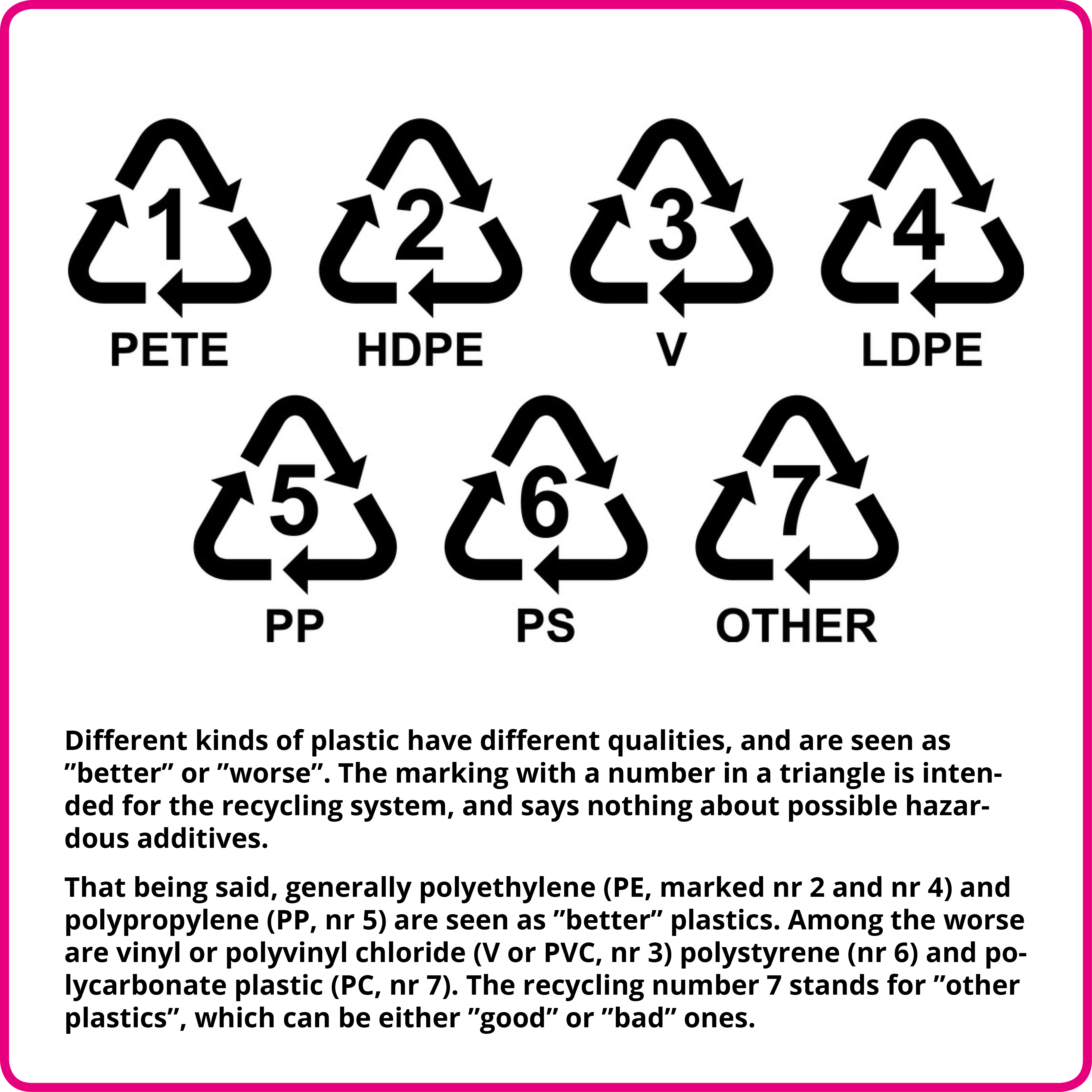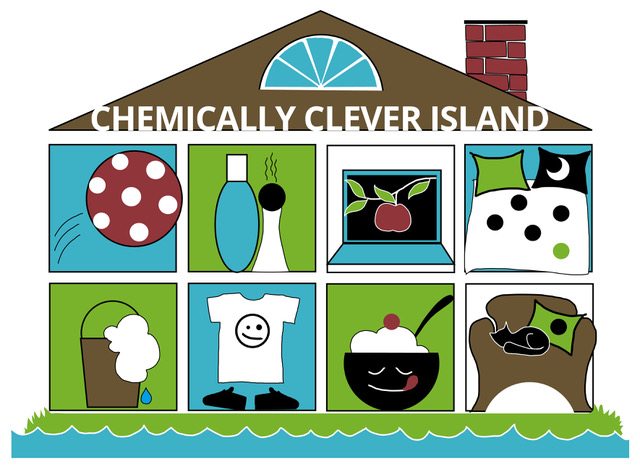Plastic – practical and problematic

What is made of plastic in your kitchen? The floor, maybe? The tablecloth? Bowls, ladles, handles of knifes? The plastic foil, the bucket, the brush? Cheap and almost magically versatile, plastic can be used in countless ways. So what’s the problem?
Plastic as a raw material
The main raw material for plastic is still fossil oil: a not renewable raw material and part of a dirty industry. The new so called bioplastics are made of starch from, for instance, cereals or sugar, but the process is energy-consuming and the end results are not necessarily environmentally friendlier than their fossil cousins. Plastic is made of small molecular building blocks, so called monomers. They are tied together to long chains, polymers. By varying what kind of monomers are used, how long the polymer chains are made and what substances are added, the plastic can take totally different shapes and be used for almost anything: toys and textiles, medical equipment, building materials and cars. The polymer is rarely harmful, but the monomers can be. In some plastics there is a bigger risk that they break free and leak out.
Chemicals
Many of the additives intended to give the plastic qualities we want – like the right texture, stability or fire resistance – can also be problematic. Softeners are additives that have been much observed in recent years. Especially phtalates have in many cases proved to be, for instance, endocrine disruptive. The tricky thing is, that legislation has problems keeping up. When one softener is banned as hazardous, it is replaced by a similar one, that later can prove to be at least equally dangerous. As consumers we have to choose: Either we rely on the protection legislation gives us, and decide that it is enough, or we decrease the amounts of plastic in our homes for safety’s sake. Another endocrine disruptive plastic chemical in the kitchen is bisphenol A (BPA). It hides in for instance jugs of ”crispy” and glass-like polycarbonate plastic, in the common black spatula and in the plastic lacquer in cans. BPA is nowadays banned in feeding bottles and packages intended for baby food. But since hormones are important messengers in human bodies throughout our lives the precaution principle is a good idea even if we don’t use a feeding bottle anymore: Avoid when possible!

Plastic garbage
In a world where anything can be made of plastic it is no wonder that shores and lands are littered, that the mountains of waste grow higher and that whole continents of plastic garbage are floating in the oceans. Nature cannot fully decompose plastic. When for instance a PET-bottle get inte the Baltic Sea and is fretted by sunshine and waves, it is fragmented into smaller and smaller pieces, which also attract non-water soluble contaminants. The fragments are eaten by aquatic animals, and so fish and birds can starve to death with their stomachs full of plastic. The circle closes at our own dinner tables: the remains of our comfortable plastic packaged lifestyle land on our own plates. The question, on an individual as well as a societal level, is: When do we really need to use plastic? And when can it be replaced by other materials?
